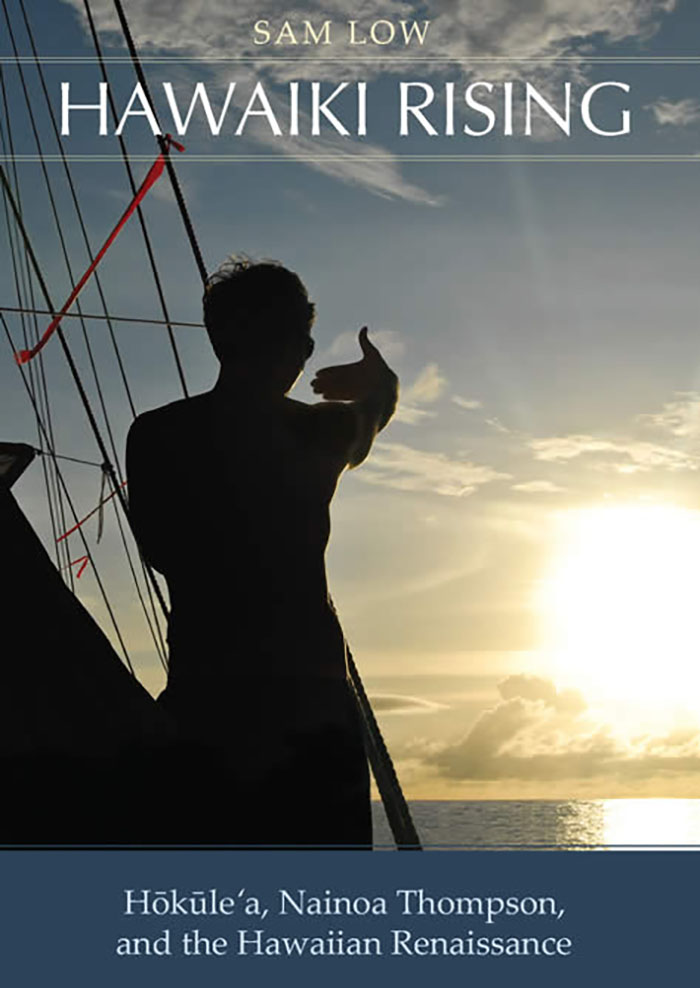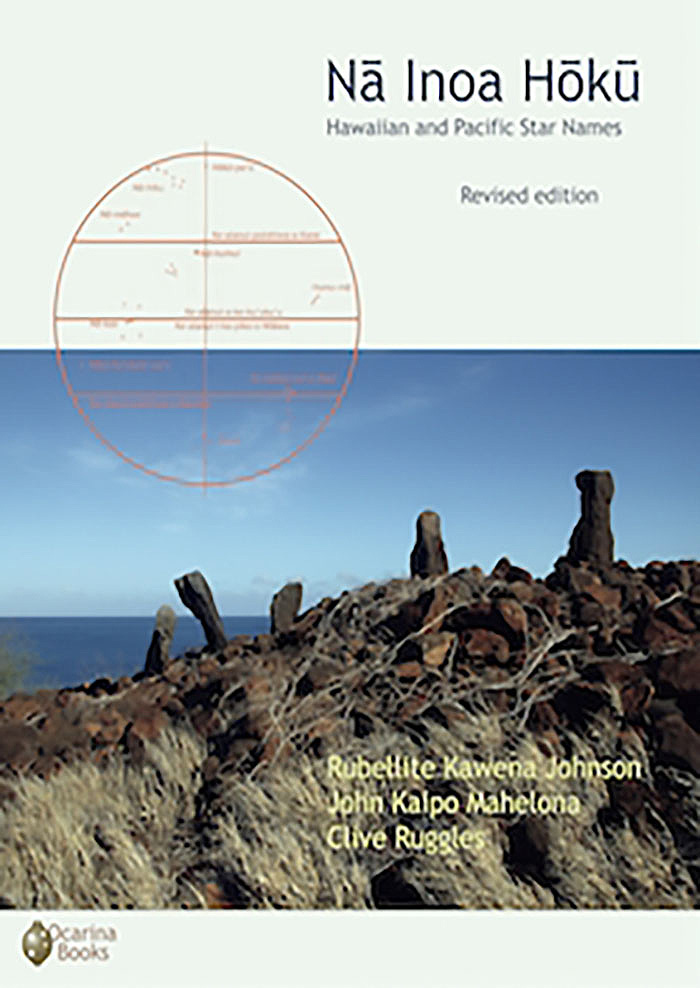Learning Resources: Books
Learning Resources:
Books
Books Featuring the Polynesian Voyaging Society and Hōkūleʻa Crew
Read More
Read More
Read More
Hawaiki Rising tells this story in the words of the men and women who created and sailed aboard Hōkūle‘a. They speak of growing up at a time when their Hawaiian culture was in danger of extinction; of their vision of sailing ancestral sea-routes; and of the heartbreaking loss of Eddie Aikau in a courageous effort to save his crewmates when Hōkūle‘a capsized in a raging storm. We join a young Hawaiian, Nainoa Thompson, as he rediscovers the ancient star signs that guided his ancestors, navigates Hōkūle‘a to Tahiti, and becomes the first Hawaiian to find distant landfall without charts or instruments in a thousand years.
Read More
Books Featuring the Polynesian Voyaging Society Founders and Teachers
Read More
Anthropologist Ben Finney tells the story of how Hawaiians and other Polynesians have struggled to become deep-sea voyagers again, and how their experiences are helping them to face contemporary problems with renewed pride and courage.
Read More
Read More
Read More
Read More
An Ocean in Mind poses a number of provocative questions about the ways in which the human mind acquires, utilizes, and transmits different forms of knowledge. Author Will Kyselka has woven an exploration of this theme around the story of the Hōkūleʻa, a re-creation of a traditional Polynesian sailing vessel that completed a successful roundtrip journey between Hawaii and Tahiti in 1980. From this story emerges portraits of two men who played integral roles in that voyage.
Read More
This is the definitive comprehensive work on the history, skills and traditions of the Hawaiian canoe from ancient voyaging craft through the evolution to the modern racing canoe. Numerous specially commissioned diagrams and illustrations, along with a wealth of photographs—many previously unpublished—will delight anyone with an interest in the maritime history of Hawaii.
Read More
In 1976 there occurred one of the most daring and unusual voyages of modern times – the sailing of a reconstruction of an ancient double-hull Polynesian canoe with a full crew aboard from Hawaii to Tahiti and return, covering a distance of almost 6000 miles. A dedicated group of scientists, sailors, and other volunteers, led by the author, had for years worked on this project, the object of which was to retrace the legendary voyages that once linked those far-flung islands and in doing so demonstrate to skeptics that the ancient Polynesians could have intentionally sailed across vast stretches of the Pacific without navigational instruments when most seafaring peoples were still hugging continental shores.
Read More
The discovery and settlement of the islands of the Pacific is the last and greatest story of human migration. The daring explorers who crossed the vast ocean that covers a third of the earth’s surface were the world’s first deepsea sailors and navigators. Thousands of years before any other peoples left the sight of land, they were venturing across unknown seas to settle far-flung islands. This richly illustrated account of Pacific voyaging, past and present, examines the very latest findings from world authorities. These fascinating insights are interwoven with superb photographs, artifacts, maps, and diagrams, which together tell a story that is a testament to the ingenuity and bravery of humankind.
Additional Resources
Read More
A Disquisition on Prehistoric Celestial Navigation and the Nature of Seagoing Double Canoes
Read More
Second edition includes a discussion of theories about traditional methods of navigation developed during recent decades, the story of the renaissance of star navigation throughout the Pacific, and material about navigation systems in Indonesia, Siberia, and the Indian Ocean.
Read More
Though long out of print, Nā Inoa Hōkū is still widely regarded as a definitive source of reference for anyone interested in the use of astronomy in Polynesian voyaging or the nature and development of ritual and calendrical practices throughout the Pacific.
Read More
Concise field guide to stars and constellations presented in a month-by-month selection of stars charts. Explains celestial phenomena, workings.
Read More
Intended for students of geography, biology, ecology, and hydrology, for visitors interested in the natural phenomena of the places they visit, and for island residents, explanations in clear language the many aspects of the climate and weather of Hawaii.
Read More
Read More
How did the earliest Polynesians find and colonize these far-flung islands? How did a people without writing or metal tools conquer the largest ocean in the world? This conundrum, which came to be known as the Problem of Polynesian Origins, emerged in the 18th century as one of the great geographical mysteries of mankind. For Christina Thompson, this mystery is personal: Her Maori husband and their sons descend directly from these ancient navigators. In Sea People, Thompson explores the fascinating story of these ancestors, as well as those of the many sailors, linguists, archaeologists, folklorists, biologists, and geographers who have puzzled over this history for 300 years.
Read More
As a young man piloting a small sailboat across the Pacific, Steve Thomas developed a fascination with ancient methods of navigation. Thomas ventured to the tiny coral atolls of Micronesia in search of these mysteries, this ancient language of the sea. There he found the last navigator, Mau Piailug. One of the few surviving palu, he belongs to a dying breed who used only natural signs – stars, waves, birds – to guide their sailing canoes across thousands of miles of open ocean. Thomas and Piailug voyage together on the frail ship of human memory in an attempt to preserve for future generations an ancient, mysterious, and beautiful kinship with the sea before it is lost forever.




















